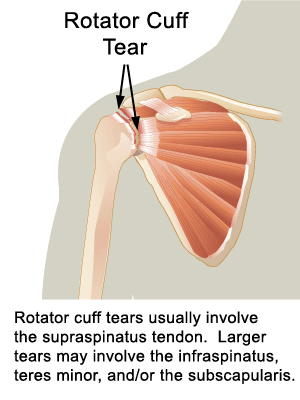
Alterations in function after rotator cuff tears in an animal model
Perry, S. M.; Getz, C. L.; Soslowsky, L. J.
J Shoulder Elbow Surg, Nº 18(2): 296-304
ABSTRACT
Hypothesis: This study utilized an animal model of multiple rotator cuff tendon tears to investigate alterations in the remaining (intact) rotator cuff tendon mechanical properties.
Materials and Methods: 24 rats served as uninjured controls, while 72 rats were divided among the tendon detachment groups (supraspinatus tendon detachment, supraspinatus+infraspinatus tendon detachment, supraspinatus+subscapularis tendon detachment). Mechanical testing was performed at 4 and 8 weeks post-injury.
Results: The remaining (intact) rotator cuff tendons had decreased mechanical properties in the presence of rotator cuff tears. Remaining (intact) subscapularis and infraspinatus tendon cross-sectional area increased, while tendon modulus decreased after both one and two tendon tears. Additionally, the remaining (intact) tendon cross-sectional areas continued to increase with time post-injury.
Discussion: This is the first animal study to examine the normal rotator cuff tendons and the remaining (intact) rotator cuff tendons after tendon detachment or tears.
We found that that the remaining (intact) rotator cuff tendons have altered mechanical properties with different tear sizes. These alterations could potentially lead to further tendon damage and tear progression
Conclusion: Results demonstrate not only differences in the uninjured rotator cuff tendons, but also that tears of one or two tendons affect the remaining (intact) tendons.
Keywords: Animal model; biomechanics; supraspinatus tendon; infraspinatus tendon; subscapularis tendon; shoulder; rotator cuff; tendon injury
Level of evidence: Level 1; Controlled laboratory study.
Level of evidence: Level 1; Controlled laboratory study.
Sem comentários:
Enviar um comentário